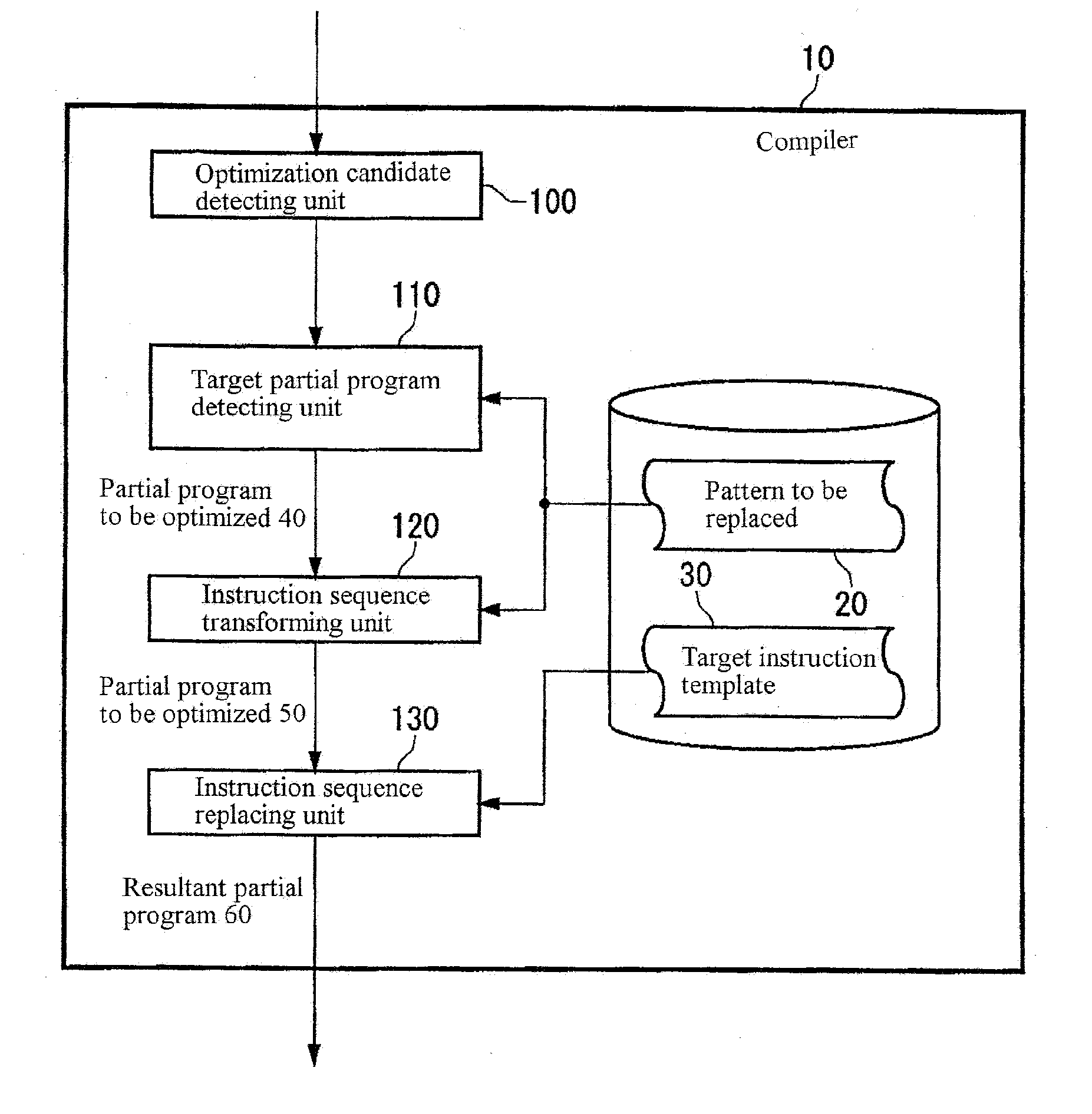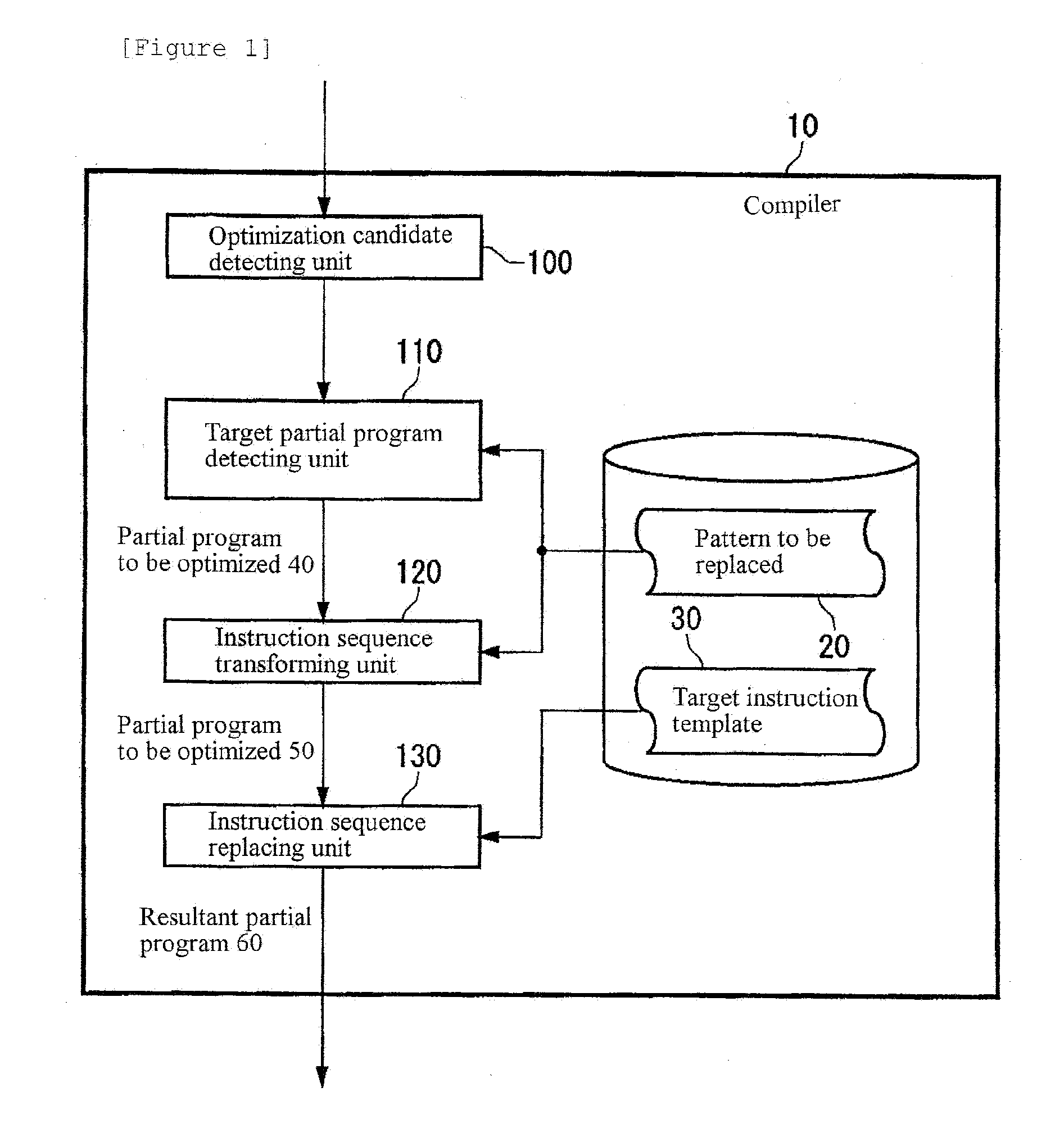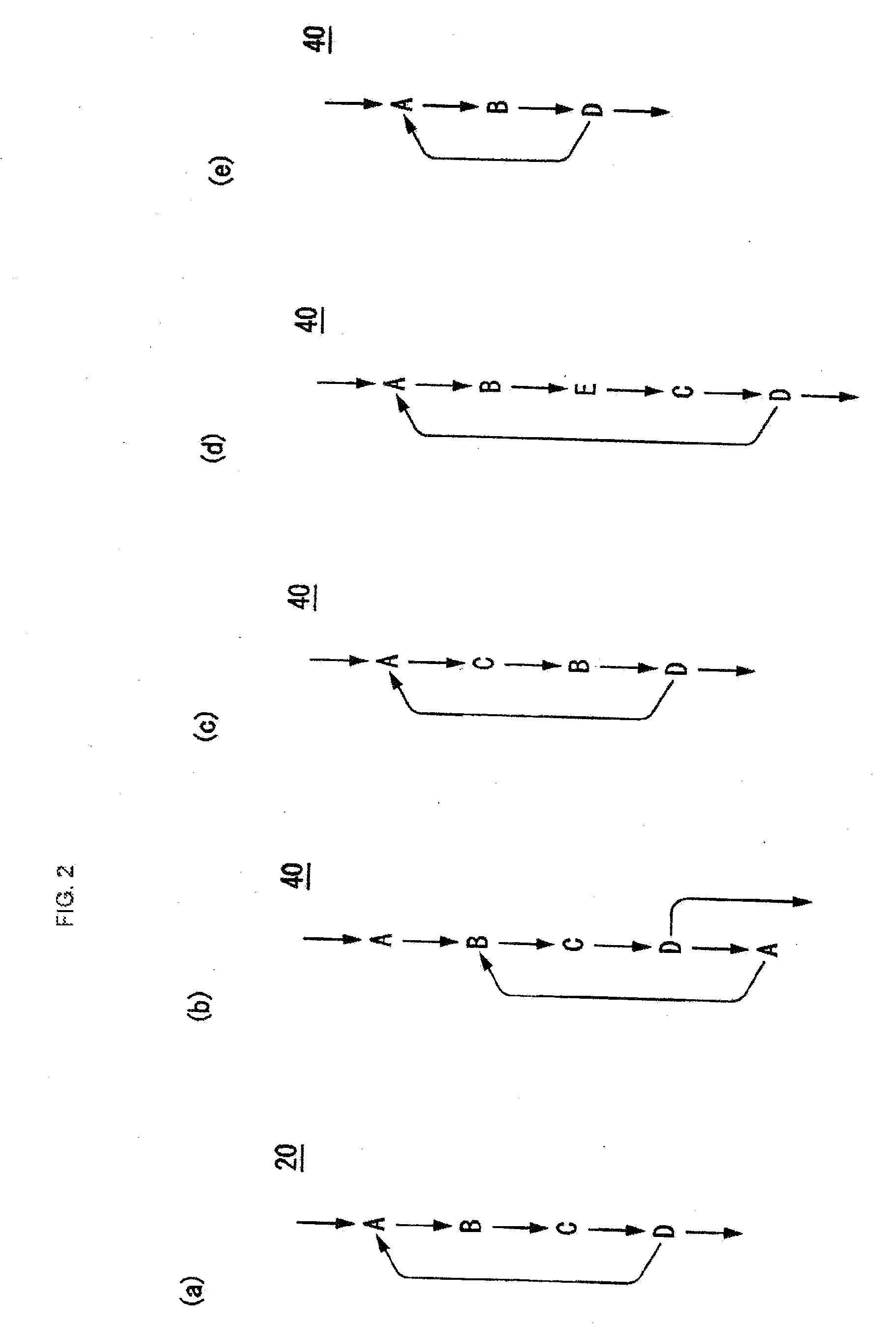Compiler Optimization
a compiler and optimization technology, applied in computing, instruments, electric digital data processing, etc., can solve problems such as failure to effectively utilize instruction and program to be optimized
- Summary
- Abstract
- Description
- Claims
- Application Information
AI Technical Summary
Benefits of technology
Problems solved by technology
Method used
Image
Examples
first example
[0080]FIG. 5(a) shows the pattern 20 to be replaced in the first example.
[0081]The pattern 20 is a pattern to be replaced for detection of an instruction sequence shown in FIG. 16. In the instruction sequence shown in FIG. 16, the destination of branching from a switch instruction (2) is variable among numbers from 2 to 256. It is, therefore, thought that there is a need to generate 255 patterns 20 having the corresponding number of branching destinations 2 to 256 in order to suitably detect the switch instruction. However, it is inefficient to compare the large number of patterns 20 and partial programs because a long processing time is required for the comparison there between.
[0082]Then, the target partial program detecting unit 110 detects partial programs to be optimized by using the illustrated pattern 20. This pattern 20 has, with respect to a multiple-branch instruction (e.g., switch instruction (2)) to hand over control to an external instruction out of the pattern 20 in a ...
second example
[0096]FIG. 8 shows a second example of the partial program 40 by the compiler 10. The program shown in FIG. 8(a) is a source program representing details of processing in accordance with the partial program 40 is shown. FIG. 8(b) is a control flow graph of the partial program 40 is shown. According to the partial program 40, the computer scans in order a storage area determined by a variable “bytes”, with respect to the index indicated by a variable “offset”. Loop processing is terminated when a negative value is detected.
[0097]In the partial program 40, loop processing has two induction variables: the variable “offset” and a variable “count”. That is, the partial program 40 and the pattern 20 shown in FIG. 5(a) apparently differ in program structure from each other. Therefore, the conventional compiler cannot recognize the partial program 40 as a program to be optimized.
[0098]According to the compiler 10 in this embodiment, the target partial program detecting unit 110 can detect a...
third example
[0102]FIG. 10 shows a third example of the partial program 40 by the compiler 10. This figure shows a source program representing details of processing in accordance with the partial program 40. According to the partial program 40, the computer scans in order a storage area determined by a variable “bytes” with respect to the index indicated by a variable “offset”. Loop processing is terminated when a negative value is detected. In this loop processing, a storage area determined by a variable “a” is initialized in order from the top.
[0103]In the partial program 40, loop processing has two induction variables: the variable “offset” and a variable “count”. That is, the partial program 40 and the pattern 20 shown in FIG. 5(a) apparently differ in program structure from each other. In this case, the conventional compiler cannot recognize the partial program 40 as a program to be optimized.
[0104]According to the compiler 10 in this embodiment, the target partial program detecting unit 11...
PUM
 Login to View More
Login to View More Abstract
Description
Claims
Application Information
 Login to View More
Login to View More - R&D
- Intellectual Property
- Life Sciences
- Materials
- Tech Scout
- Unparalleled Data Quality
- Higher Quality Content
- 60% Fewer Hallucinations
Browse by: Latest US Patents, China's latest patents, Technical Efficacy Thesaurus, Application Domain, Technology Topic, Popular Technical Reports.
© 2025 PatSnap. All rights reserved.Legal|Privacy policy|Modern Slavery Act Transparency Statement|Sitemap|About US| Contact US: help@patsnap.com



